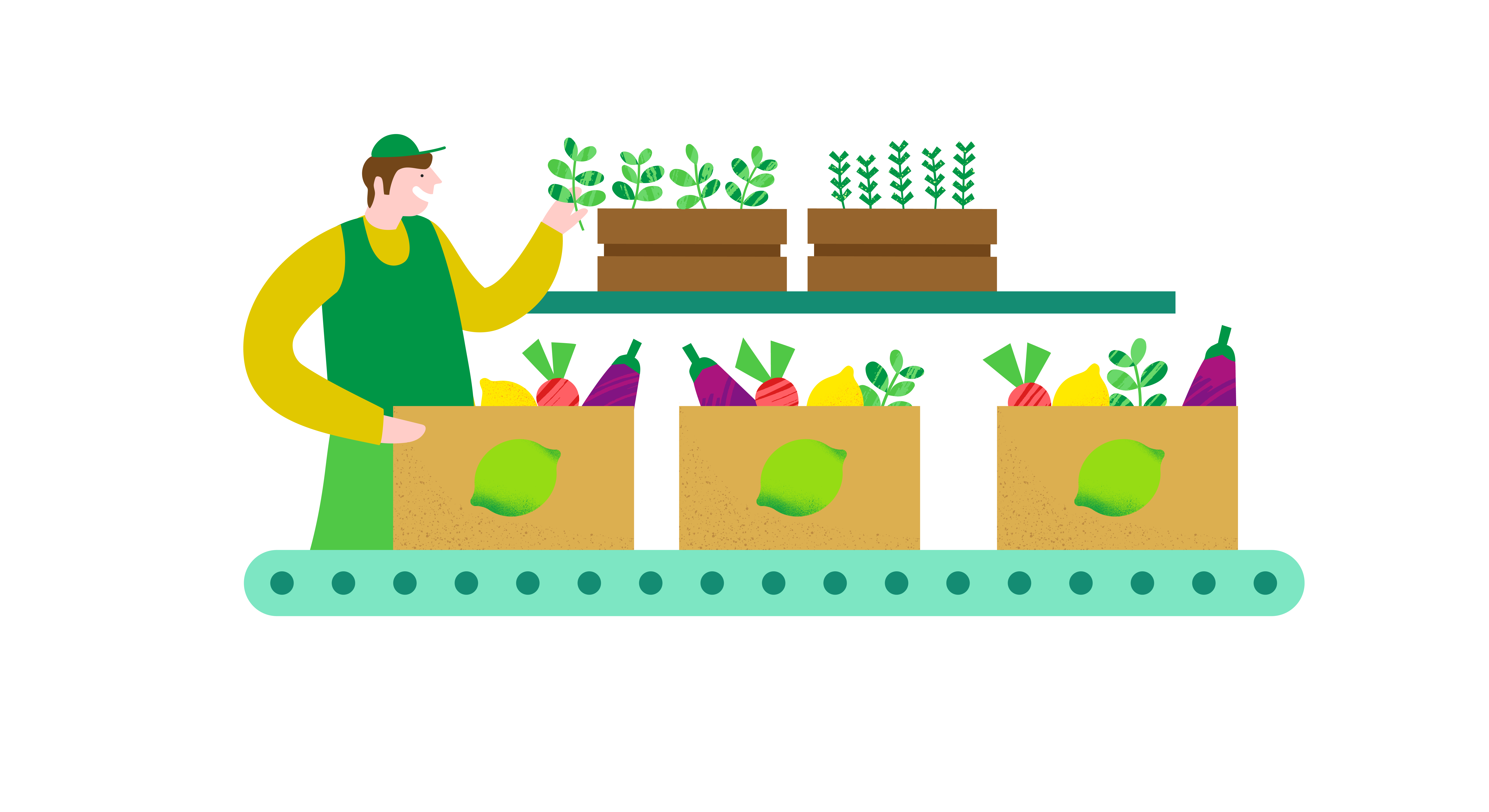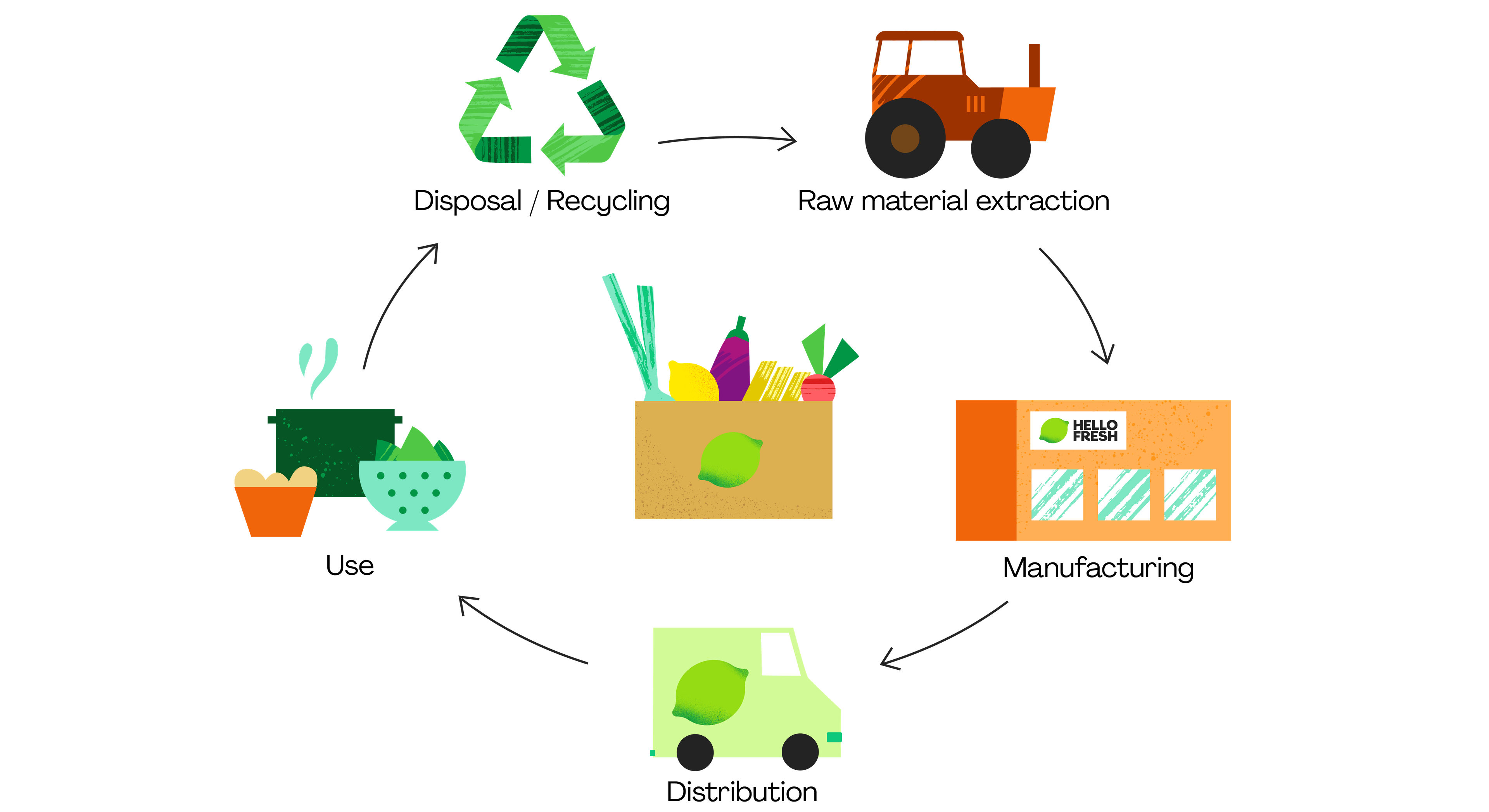25%* fewer carbon emissions than the grocery store
Your HelloFresh meals create 25%* fewer carbon emissions than the same meals made from grocery store ingredients.
*On a global average; national levels differ.
Your HelloFresh meals create 25%* fewer carbon emissions than the same meals made from grocery store ingredients.
*On a global average; national levels differ.

Our short supply chain
Ingredients are by far the biggest contributor to carbon emissions in our supply chain. Unlike grocery stores and restaurant delivery services, HelloFresh has an extremely short supply chain. We eliminate extra stops along our transport routes and favour local ingredient sourcing, which means ingredients travel for less time and avoid unnecessary food waste along the way.

25%* fewer carbon emissions than the grocery store
Because of this, HelloFresh meals result in fewer emissions than similar meals from restaurant delivery or grocery stores as indicated by an ISO 14040-compliant LCA study completed in April 2022: On a global average, a HelloFresh meal has 25% lower carbon emissions than a similar meal made with ingredients purchased from the grocery store and 5.5% lower than a meal delivered from a restaurant.
*On a global average; national levels differ.
*On a global average; national levels differ.

Our short supply chain
Ingredients are by far the biggest contributor to carbon emissions in our supply chain. Unlike grocery stores and restaurant delivery services, HelloFresh has an extremely short supply chain. We eliminate extra stops along our transport routes and favour local ingredient sourcing, which means ingredients travel for less time and avoid unnecessary food waste along the way.

25%* fewer carbon emissions than the grocery store
Because of this, HelloFresh meals result in fewer emissions than similar meals from restaurant delivery or grocery stores as indicated by an ISO 14040-compliant LCA study completed in April 2022: On a global average, a HelloFresh meal has 25% lower carbon emissions than a similar meal made with ingredients purchased from the grocery store and 5.5% lower than a meal delivered from a restaurant.
*On a global average; national levels differ.
*On a global average; national levels differ.

What is a Life Cycle Assessment Study?

What is the LCA study scope?

How did we calculate the results?

